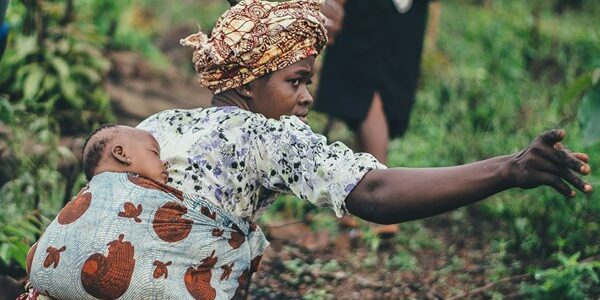Overview
The “Planting for Food and Jobs” (PFJ) program is a flagship initiative by the Government of Ghana, aimed at transforming the agricultural sector, improving food security, and creating employment opportunities for the youth. Launched in 2017, the program has been central to Ghana’s efforts to enhance its agricultural productivity, reduce poverty, and stimulate rural economies.
Key Objectives of the Planting for Food and Jobs Program
- Increase Agricultural Production: The program focuses on increasing the production of staple foods such as maize, rice, sorghum, millet, and vegetables. By providing support to farmers, it seeks to ensure that Ghana becomes self-sufficient in food production and reduces dependence on food imports.
- Job Creation: One of the primary goals is to create jobs within the agricultural sector. The program targets the youth and women, aiming to reduce unemployment through both direct agricultural employment and ancillary industries related to agriculture.
- Promotion of Value Addition: PFJ also emphasizes post-harvest handling and processing. By adding value to raw agricultural products, the program encourages the creation of small-scale agro-processing industries that can boost employment and increase the economic benefits from farming.
- Fostering Food Security: Ensuring that Ghana’s population has access to affordable and nutritious food is a core objective. The program aims to reduce food imports by boosting local food production and encouraging the adoption of improved farming techniques.
How It Works
The program operates through several key components:
- Input Subsidy: Farmers enrolled in the program receive subsidized agricultural inputs such as seeds, fertilizers, and equipment. This makes farming more accessible to smallholder farmers, especially those in rural areas who may struggle with the high cost of agricultural inputs.
- Extension Services: The government has put in place agricultural extension officers who work closely with farmers to provide technical advice and training on modern farming practices. This includes teaching farmers how to improve crop yields, manage pests, and adopt climate-smart agricultural practices.
- Market Linkages: The program also assists farmers in accessing local and international markets for their produce. This is done through partnerships with private sector companies, cooperatives, and agricultural processing firms.
- Youth Involvement: By targeting young people, particularly graduates, the program creates avenues for youth to participate in agriculture, not just as farmers but also in other value chains such as distribution, processing, and marketing.
Achievements and Impacts
Since its launch, the PFJ program has made notable progress:
- Increased Crop Yields: According to the government, the program has led to an increase in the production of key crops, with maize production rising from 1.88 million metric tons in 2016 to 2.4 million metric tons in 2020.
- Job Creation: As of 2020, over 1.5 million farmers had been registered under the program, with many benefiting from training, input subsidies, and market linkages. This has contributed to the creation of thousands of jobs, particularly in rural areas.
- Infrastructure Development: The program has contributed to the development of rural infrastructure, including warehouses, roads, and processing plants, helping to enhance agricultural productivity.
Challenges
While the PFJ program has had a positive impact, it has faced some challenges:
- Input Distribution: Issues with the timely and equitable distribution of subsidized inputs have sometimes hindered the program’s effectiveness. Farmers in remote areas have reported delays in receiving fertilizers and seeds.
- Climate Change: Climate change poses a significant threat to agriculture in Ghana, and erratic weather patterns have affected the productivity of some crops. The government has been working on climate-resilient farming techniques, but the effects of climate change remain a major challenge.
- Sustainability: Ensuring the long-term sustainability of the program is a concern, especially when it comes to securing financing and maintaining the momentum of the subsidy scheme without over-reliance on government support.
The Future of Planting for Food and Jobs
Looking ahead, the PFJ program is expected to continue evolving. There are ongoing efforts to incorporate technology into the agricultural value chain, such as the use of digital platforms for marketing, weather forecasting, and financial services for farmers. Additionally, the government is increasingly focusing on improving the agro-processing sector to ensure that Ghana can capture more value from its agricultural products.
The government is also exploring ways to make the program more climate-resilient by introducing more drought-resistant and pest-resistant crop varieties and educating farmers about sustainable agricultural practices.
Further Reading
- MoFA: The planting for Food and Jobs Phase II (PFJ 2.0) Program has clear strategic objectives and interventions for Agriculture to deliver food security and resilience within five years: Dr. Bryan Acheampong
- Planting for Food and Jobs Phase II (PFJ 2.0)
Youtube videos
- Planting for Food and Jobs, Ghana – Highlights
- Credit: AGRA
- Planting for Food and Jobs Phase ll
- Credit: Ministry of Food and Agriculture
- Planting for food and jobs: President Akufo-Addo launches phase two | Citi Newsroom
- Credit: Citi Newsroom




